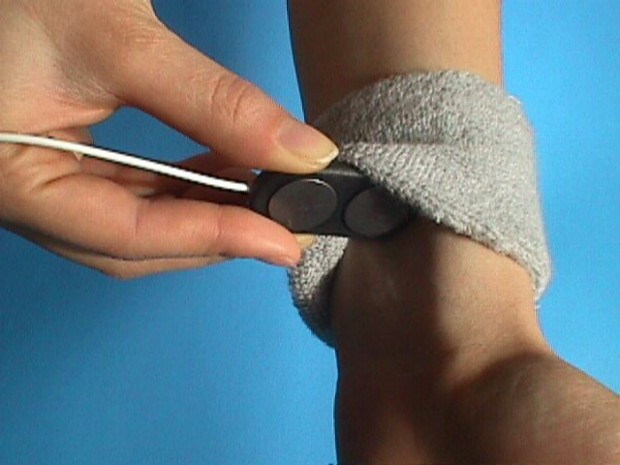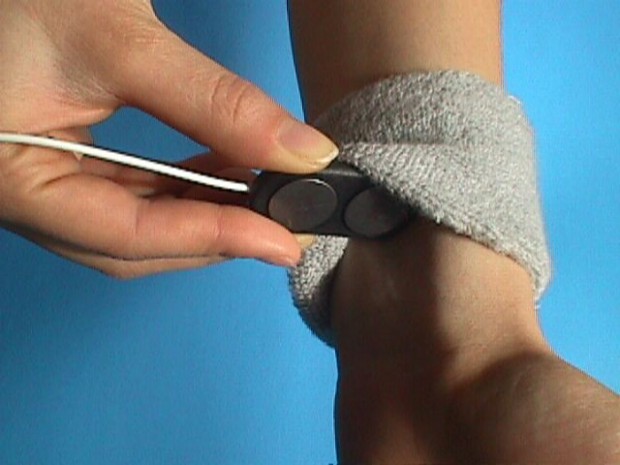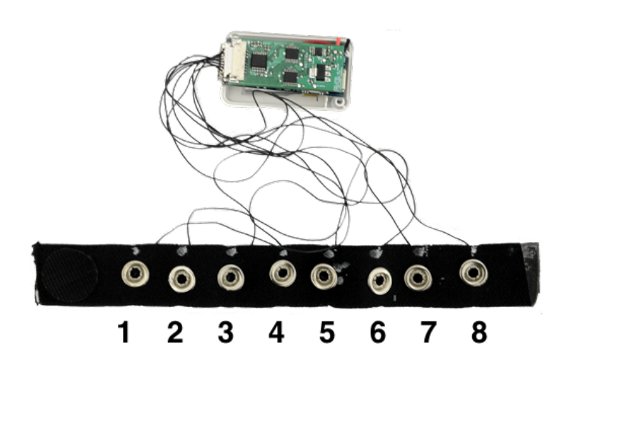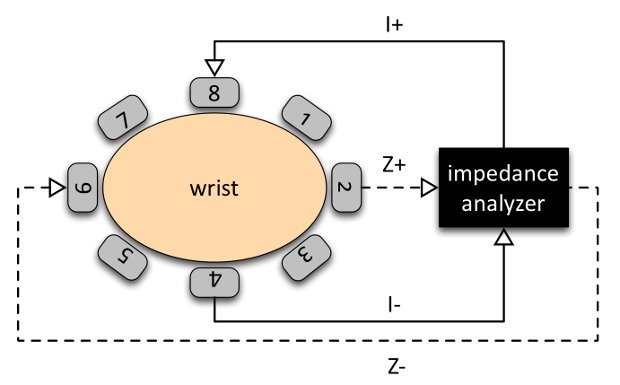

Today's smartphones unlock with facial recognition, and retina detection software can now be fooled by iris forgeries. It seems we went through the biometric looking glass quite some time ago, so a bioencrypted wristband sort of makes total sense.
Earlier this year we were inspired by Sensum's innovative use of galvanic skin response to augment videos with biodata-viz. The University of Dartmouth's bioimpedance bracelet uses a similar principle, sensing your bodies resistance to a small electrical current, but in a more sophisticated manner. The prototype sensor aggregates a number of electrical frequencies, effectively what electrical resistance your wristbone, skin and muscle tendons produce together.
The result was an electrical signature unique to each of the 47 people in the trial. An important caveat was that was possible only when groups were subdivided into families of 5 people. It thus remains a big question whether this method can scale to unique bioencryption for every human on earth. It does however have benefits as a passive biometric identifier. And a bluetooth communicated biosignature from one of these bracelets would be much more difficult to spoof than the software encryption presently used (and recently hacked) in insulin implants and pacemakers.
Nike Fuelband has made us more accustomed to the notion of wristwear being wearable computing – this device could incorporate biometric security metadata into the growing number of Near Field Communication devices, and may prove appealing to quantified self-hackers with concerns over the privacy of their personal data.





Discussion